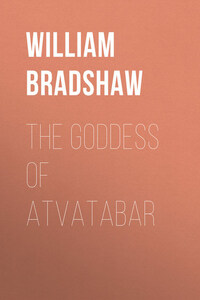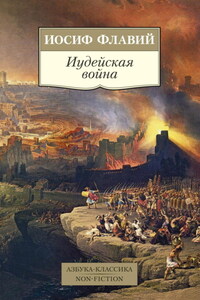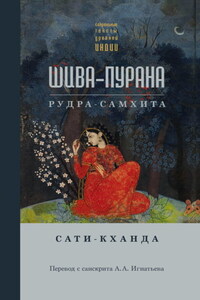It is proper that some explanation be made as to the position occupied by the following story in the realm of fiction, and that a brief estimate should be made of its literary value.
Literature may be roughly classified under two heads – the creative and the critical. The former is characteristic of the imaginative temperament, while the latter is analytical in its nature, and does not rise above the level of the actual. Rightly pursued, these two ways of searching out truth should supplement each other. The poet finds in God the source of matter; the man of science traces matter up to God. Science is poetry inverted: the latter sees in the former confirmation of its airiest flight; it is synthetic and creative, whereas science dissects and analyzes. Obviously, the most spiritual conceptions should always maintain a basis in the world of fact, and the greatest works of literary art, while taking their stand upon the solid earth, have not feared to lift their heads to heaven. The highest art is the union of both methods, but in recent times realism in an extreme form, led by Zola and Tolstoi, and followed with willing though infirm footsteps by certain American writers, has attained a marked prominence in literature, while romantic writers have suffered a corresponding obscuration. It must be admitted that the influence of the realists is not entirely detrimental; on the contrary, they have imported into literature a nicety of observation, a heedfulness of workmanship, a mastery of technique, which have been greatly to its advantage. Nevertheless, the novel of hard facts has failed to prove its claim to infallibility. Facts in themselves are impotent to account for life. Every material fact is but the representative on the plane of sense of a corresponding truth on the spiritual plane. Spirit is the substance; fact the shadow only, and its whole claim to existence lies in its relation to spirit. Bulwer declares in one of his early productions that the Ideal is the only true Real.
In the nature of things a reaction from the depression of the realistic school must take place. Indeed, it has already set in, even at the moment of the realists' apogee. A dozen years ago the author of "John Inglesant," in a work of the finest art and most delicate spirituality, showed that the spell of the ideal had not lost its efficacy, and the books that he has written since then have confirmed and emphasized the impression produced by it. Meanwhile, Robert Louis Stevenson and Rider Haggard have cultivated with striking success the romantic vein of fiction, and the former, at least, has acquired a mastery of technical detail which the realists themselves may envy. It is a little more than a year, too, since Rudyard Kipling startled the reading public with a series of tales of wonderful force and vividness; and whatever criticism may be applied to his work, it incontestably shows the dominance of a spiritual and romantic motive. The realists, on the other hand, have added no notable recruits to their standard, and the leaders of the movement are losing rather than gaining in popularity. The spirit of the new age seems to be with the other party, and we may expect to see them enjoy a constantly widening vogue and influence.
The first practical problem which confronts the intending historian of an ideal, social, or political community is to determine the locality in which it shall be placed. It may have no geographical limitations, like Plato's "Republic," or Sir Philip Sidney's "Arcadia." Swift, in his "Gulliver's Travels," appropriated the islands of the then unknown seas, and the late Mr. Percy Greg boldly steered into space and located a brilliant romance on the planet Mars. Mr. Haggard has placed the scene of his romance "She" in the unexplored interior of Africa. After all, if imagination be our fellow-traveller, we might well discover El Dorados within easy reach of our own townships.
Other writers, like Ignatius Donnelly and Edward Bellamy, have solved the problem by anticipating the future. Anything will do, so that it be well done. The real question is as to the writer's ability to interest his readers with supposed experiences that may develop mind and heart almost as well as if real.
"The Goddess of Atvatabar," like the works already mentioned, is a production of imagination and sentiment, the scene of action being laid in the interior of the earth. It is true that the notion has heretofore existed that the earth might be a hollow sphere. The early geologists had a theory that the earth was a hollow globe, the shell being no thicker in proportion to its size than that of an egg. This idea was revived by Captain Symmes, with the addition of polar openings. Jules Verne takes his readers, in one of his romances, to the interior of a volcano, and Bulwer, in his "Coming Race," has constructed a world of underground caverns. Mr. Bradshaw, however, has swept aside each and all of these preliminary explorations, and has kindled the fires of an interior sun, revealing an interior world of striking magnificence. In view of the fact that we live on an exterior world, lit by an exterior sun, he has supposed the possibility of similar interior conditions, and the crudity of all former conceptions of a hollow earth will be made vividly apparent to the reader of the present volume. "The Goddess of Atvatabar" paints a picture of a new world, and the author must be credited with an original conception. He has written out of his own heart and brain, without reference to or dependence upon the imaginings of others, and it is within the truth to say that in boldness of design, in wealth and ingenuity of detail, and in lofty purpose, he has not fallen below the highest standard that has been erected by previous writers.








